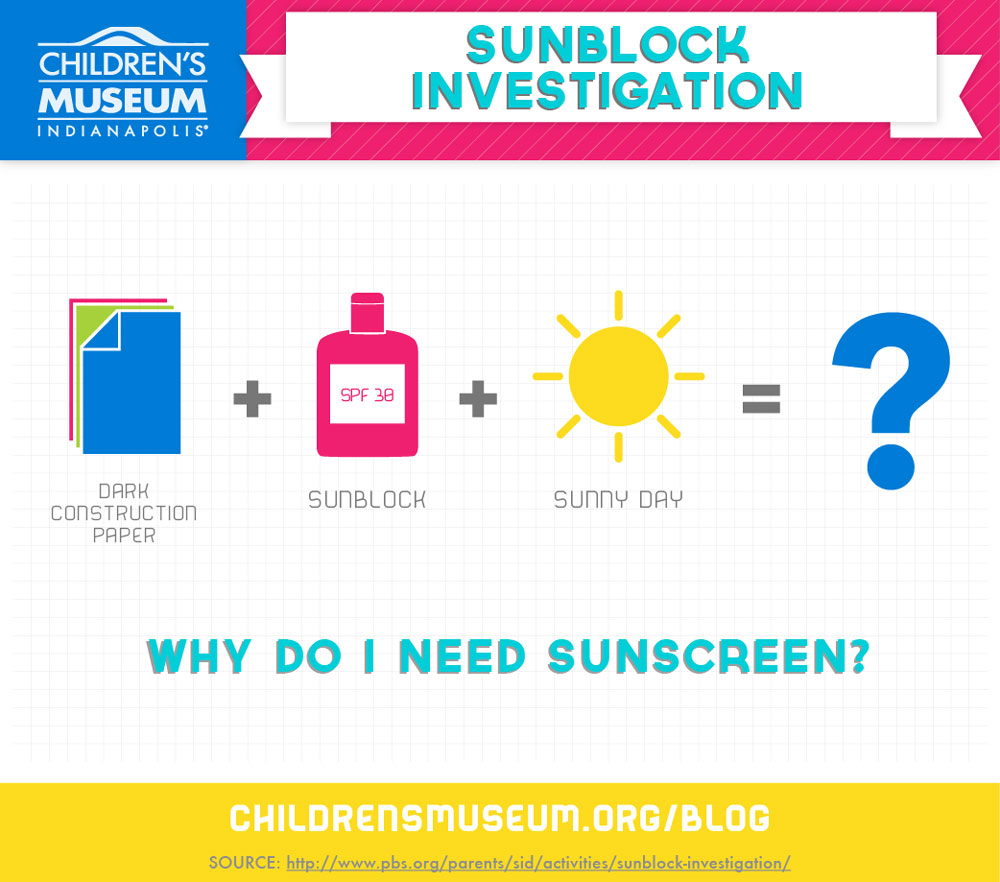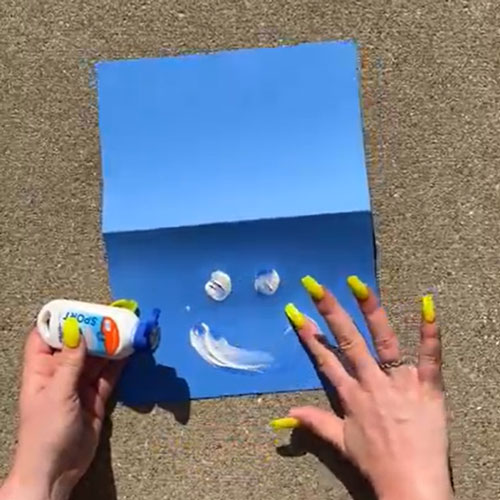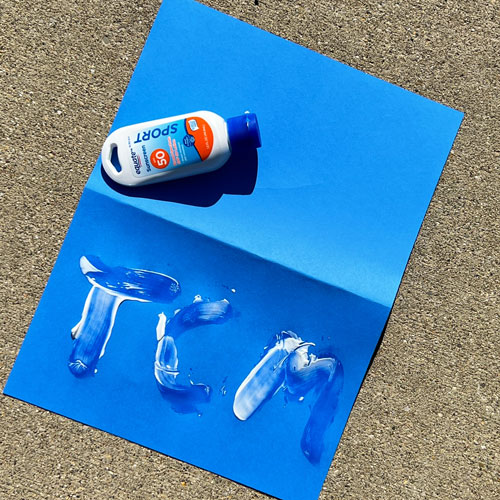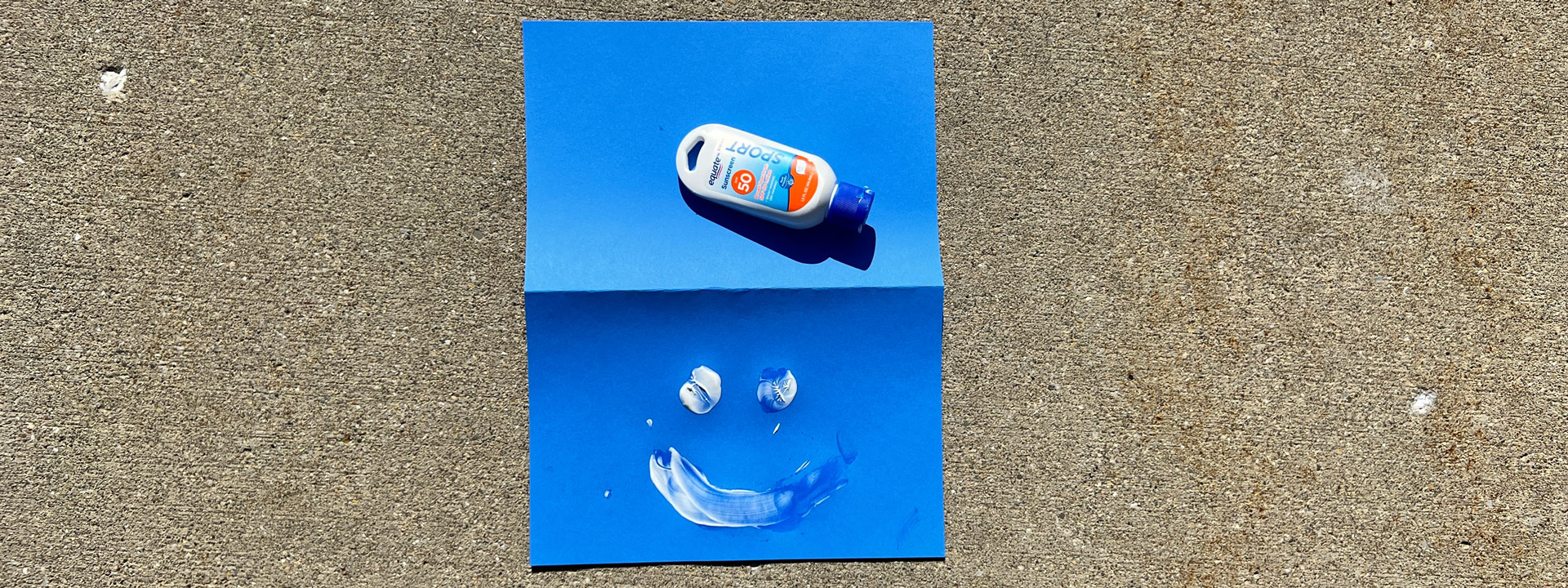
Sunscreen can be pretty gross. It’s all slimy and cold, and it takes forever to rub it in. You have to have help to get your back, and if you forget your ears (and everyone has forgotten their ears), then your ears burn so bad that you don’t even know why you bothered. If you’re at the beach, it makes the sand stick to you, and if you don’t get the right kind, it makes the water bead up on you. It makes your towel all greasy and weird, and boy is it a pain.
But the alternative is worse. Trust me on this. I have gotten second-degree sunburns so you don’t have to. A nasty sunburn can kick your butt for days, and too much sun exposure puts people at a higher risk for skin cancer later in life. That’s why sunscreen is so important: because even though getting out there in the sun is great, sometimes there can be too much of a good thing. Today’s experiment will help you understand just how powerful and important sunscreen is.
Materials
- Dark-colored construction paper
- Sunblock with sun protection factor (SPF) of 30 or higher
- A sunny day
Process
- Fold the paper in half, then unfold it.
- Using your fingers, put some sunscreen on one of the halves of your paper and leave the other unprotected. You can cover the whole side or even draw some designs.
- Leave the paper in a sunny spot outside for a few hours.
Don’t forget to wash the sunscreen off your hands! - After a few hours, observe the paper.
What happened to the side without sunscreen?
Is it the same color as it was before?
How is the side with sunscreen different from the side without sunscreen?

Summary
I bet something happened to the unprotected side of your construction paper. Perhaps it faded out to a lighter color, while the section under the sunscreen didn’t? Now, we all know that sunburns and suntans involve the opposite of losing color, but the reason the sunblock works is the same in both cases, and both processes (color fading and sunburning) are largely caused by something called ultraviolet light.
What is “UV” light?
Ultraviolet (UV) is light that human eyes can’t see. Light is made of particles called photons, which all have certain wavelengths, and some wavelengths are too long or short for our eyes. UV’s wavelength is too short. Short wavelengths also generally mean lots of energy, and that extra energy (compared to visible light) is why UV can be so damaging.
In the case of the construction paper, the UV photons coming from the sun blast through the pigments (the natural or synthetic chemicals that give the paper its color) and break them down. As they break down, the color begins to fade.
What happens to your skin when it’s under assault by UV is almost the opposite. First, the extra energy burns you, and you turn red and painful. But then your skin responds by creating and releasing more of a specific type of pigment called melanin. Melanin is the pigment that gives all humans our different skin tones, and the more you have, the better protected you are from the sun. But melanin doesn’t work that well. Here’s where sunscreen comes in.

So then what is sunscreen?
Sunscreen is basically lotion mixed with tiny little particles that do two different things. Some of them reflect all light (visible and invisible), to make some UV bounce right off your skin. Some of them absorb the UV before it can even get to your skin, but those particles can only absorb so much before they start to break down. That (and the fact that sunscreen can rub off or wash off in water) is why you have to reapply it every couple of hours.
So the paper’s pigments benefit from the reflecting and absorbing particles in the same way that your skin does. Now, remember above where we mentioned Sun Protection Factor (SPF)? Sunscreen comes in different levels of that, and the higher they go, the more UV they block. You can try another experiment where you use different pieces of paper with different SPF levels to see if you can tell the difference. In the real world, though, you should always use at least 30, and don’t worry about going above 50. There isn’t any evidence that an SPF above 50 has any extra benefit.

 (
(











